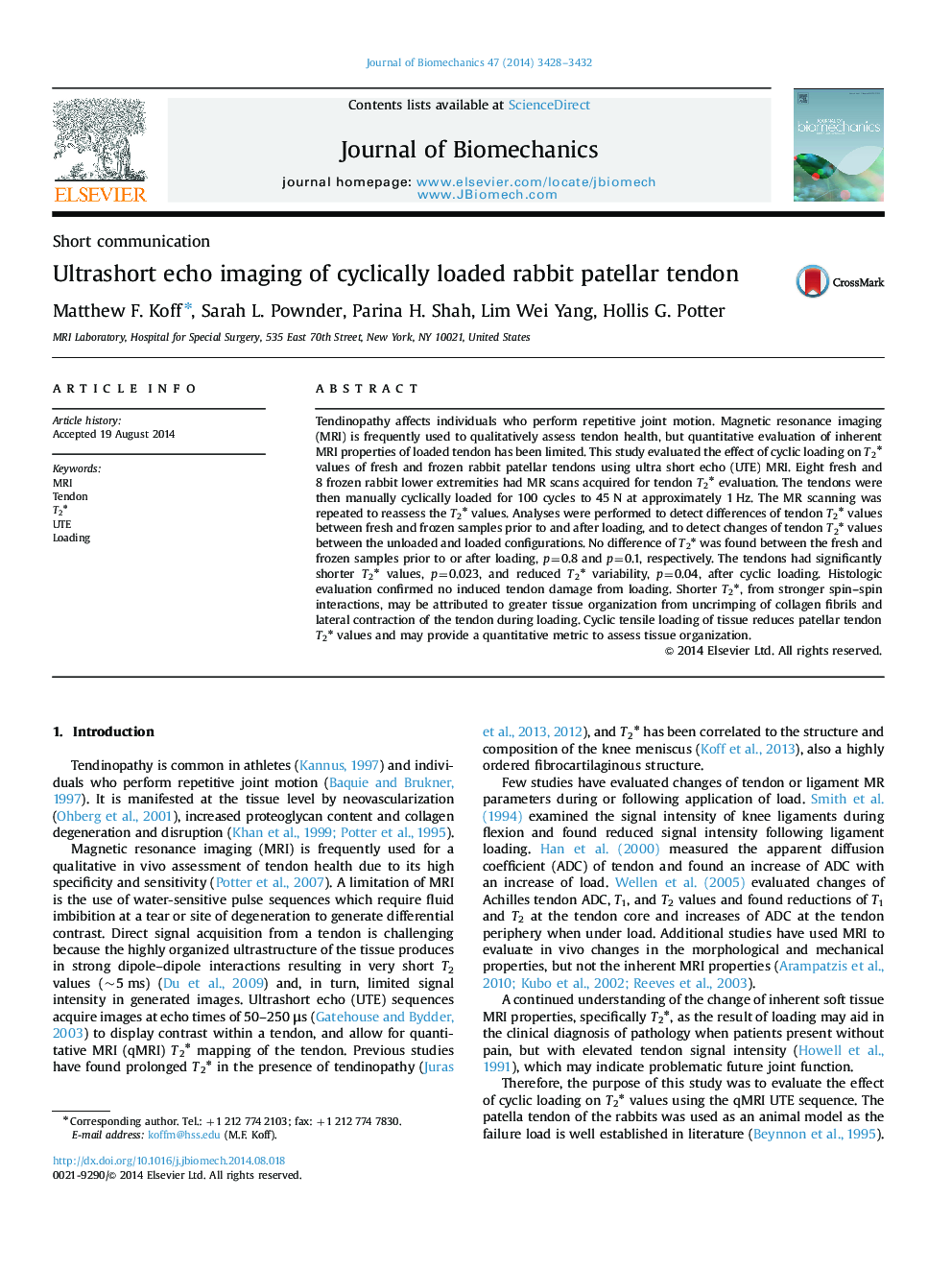| Article ID | Journal | Published Year | Pages | File Type |
|---|---|---|---|---|
| 10431948 | Journal of Biomechanics | 2014 | 5 Pages |
Abstract
Tendinopathy affects individuals who perform repetitive joint motion. Magnetic resonance imaging (MRI) is frequently used to qualitatively assess tendon health, but quantitative evaluation of inherent MRI properties of loaded tendon has been limited. This study evaluated the effect of cyclic loading on T2â values of fresh and frozen rabbit patellar tendons using ultra short echo (UTE) MRI. Eight fresh and 8 frozen rabbit lower extremities had MR scans acquired for tendon T2â evaluation. The tendons were then manually cyclically loaded for 100 cycles to 45Â N at approximately 1Â Hz. The MR scanning was repeated to reassess the T2â values. Analyses were performed to detect differences of tendon T2â values between fresh and frozen samples prior to and after loading, and to detect changes of tendon T2â values between the unloaded and loaded configurations. No difference of T2â was found between the fresh and frozen samples prior to or after loading, p=0.8 and p=0.1, respectively. The tendons had significantly shorter T2â values, p=0.023, and reduced T2â variability, p=0.04, after cyclic loading. Histologic evaluation confirmed no induced tendon damage from loading. Shorter T2â, from stronger spin-spin interactions, may be attributed to greater tissue organization from uncrimping of collagen fibrils and lateral contraction of the tendon during loading. Cyclic tensile loading of tissue reduces patellar tendon T2â values and may provide a quantitative metric to assess tissue organization.
Related Topics
Physical Sciences and Engineering
Engineering
Biomedical Engineering
Authors
Matthew F. Koff, Sarah L. Pownder, Parina H. Shah, Lim Wei Yang, Hollis G. Potter,
